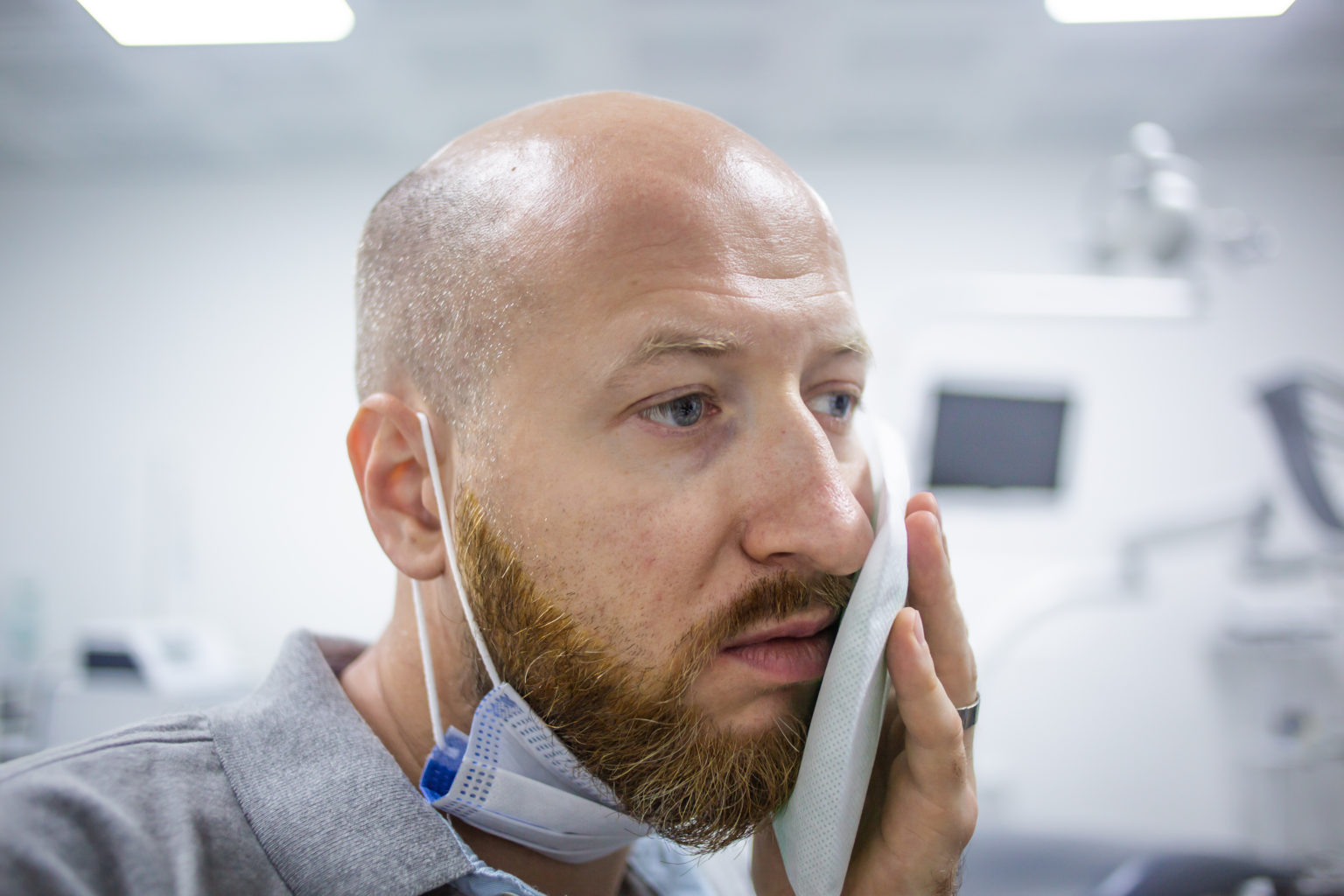
Persistent jaw pain after the dentist is something to take seriously. While local inflammation of the gums, soreness of the jaw muscles, and tooth sensitivity can be normal in the days after a dental procedure, prolonged jaw pain for more than a week could be indicating an injury to the temporomandibular joint (TMJ). Prolonged jaw pain is a serious issue because untreated jaw pain is a risk factor for the development of chronic TMJ pain disorders.
Here we cover the mechanics of jaw injury during dental work and then provide a plan for jaw pain relief.
There are several features of dental procedures that make the TMJ complex vulnerable to injury. To understand this, it helps to remember that the TMJ and its surrounding muscles and ligaments are one of the most complicated and most used joint systems in the body. The joint has two distinct planes of motion, a floating articular disc, major and minor ligaments, and four paired muscles that work together to accomplish the tasks of eating and speaking.
Just like any complex joint in the body, the jaw joint is vulnerable to sprain and strain injuries (called “jaw and muscle sprain/strain”, or JAMSS). Jaw sprain or strain can occur during dental work because of hyperextension of the jaw. When the dentist asks you to “open wide”, you open to your maximal comfortable distance, which for most people is around two fingers wide. But when instruments and hands are in the mouth, the jaw is often pushed beyond this comfort limit.
Jaw hyperextension can cause trauma to the TMJ ligaments and muscles, leading to a guarding reflex, where the muscles begin to contract and become tense. Strain injuries are most clearly documented in third molar removal cases, where there is often substantial force placed on the jaw, or where forced extension is used to get access to the back molars.
Prolonged dental procedures are also a problem. Even when the jaw is not hyperextended but is merely opened for long periods of time, it can trigger a guarding reflex in the jaw muscles. Recent studies have documented that a significant number of people having routine dental procedures that last over two hours can experience TMJ pain a week or more after the procedure. If you plan to have a long dental procedure, ask your dentist to give you a break somewhere in between to avoid this.
One final and confounding source of TMJ pain after the dentist is trauma from the injection of local anesthesia. Symptoms of injection trauma are usually limited to the first several days after the procedure and typically present as numbness and tingling rather than soreness and pain.
The guarding reflex in the jaw muscles is the common result of the above mechanisms of injury. This muscle hyperreactivity is the bridge between acute injuries and chronic TMJ pain. Here’s how it works:
This is the vicious cycle of pain that occurs in chronic TMJ disorders. Even though the original injury might have been microtrauma to the ligaments, chronic muscle tension and central sensitization perpetuate the pain long after the ligamentous injury is healed.
“Strain injuries from dental procedures need to be taken seriously. Studies have shown that over 50% of people with chronic TMJ pain cite dental work as the initiating factor. The key to preventing chronic TMJ pain is to aggressively treat jaw pain in the acute phase, when it first starts”, explains Bradley Eli, DMD, MS, an orofacial pain specialist.
The best way to achieve jaw pain relief is to use a comprehensive approach, using multiple tools that bring you towards your goal of pain relief. Here are the main components in a multimodal treatment approach for jaw pain:
All of these interventions are included in the Speed2Treat® Home Healing Kit. The kit was designed by orofacial pain specialists to give you everything you need to comprehensively treat acute jaw pain. Don’t let your jaw pain turn into a chronic TMJ pain condition. Start your journey toward jaw pain relief today with the Speed2Treat® Home Healing Kit!
